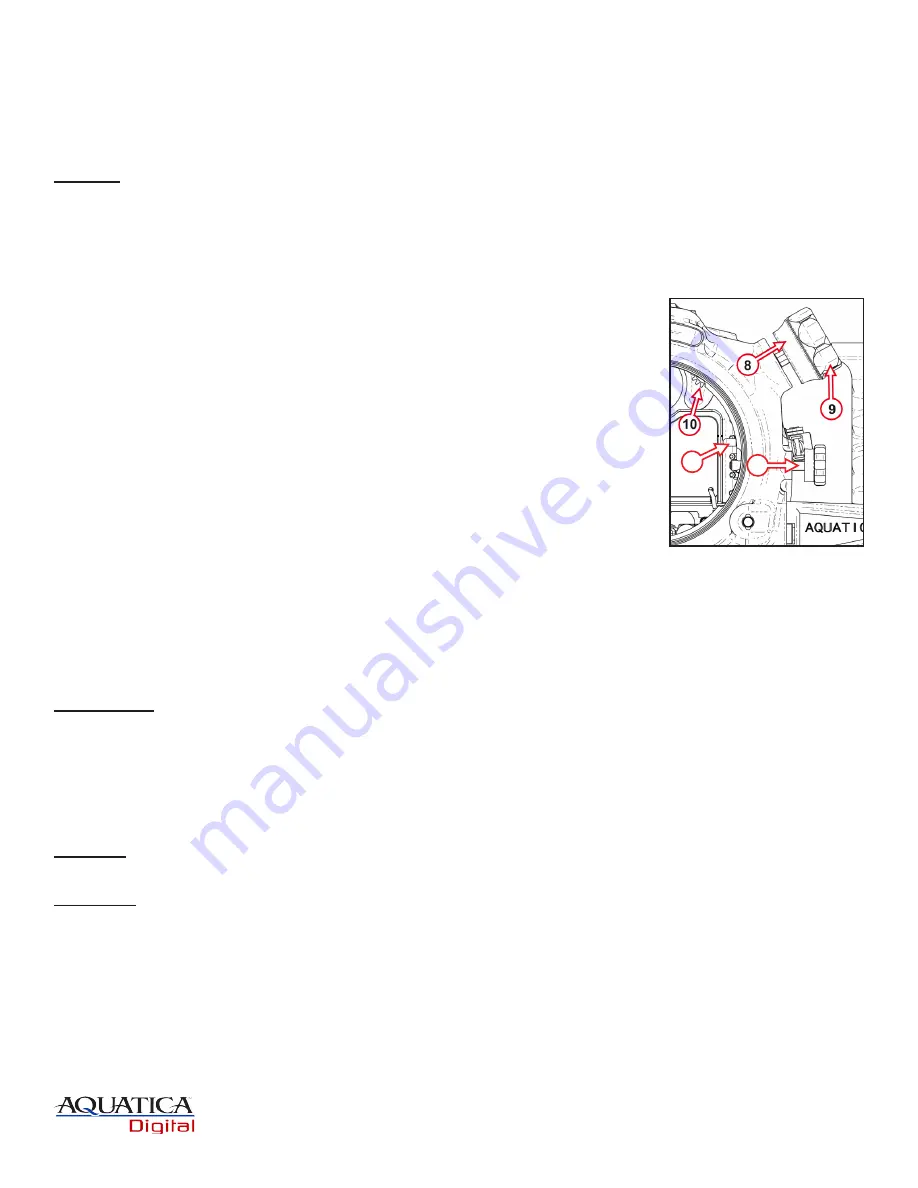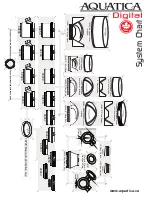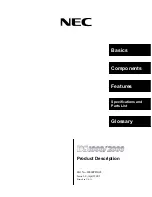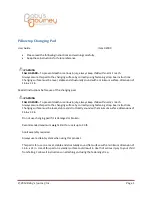
Page 12
FIELD MAINTENANCE
Whenever changing ports or O-rings, it is highly advisable to perform a simple seal test without the camera inside. Strapping a weight to
the housing and lowering the unit to a depth of 30 to 50 feet of water for at least 10 minutes will assure you that the seating of the new
port or o-ring is proper. This test, though time consuming and often considered unnecessary, may save your camera equipment from ir-
reparable water damage. The housing is now ready for the dive.
CAUTION:
Never jump into the water with the housing. It is best to have the system handed to you after you have made your entry, or
have it lowered to you on a rope. Make certain that ropes of other equipment stay clear of the system.
When photographing, be sure to respect the environment. Avoid damaging marine life or manipulating sea creatures to obtain a pleasing
photo. The housing is slightly negatively buoyant so that you can lay it down on the bottom, but avoid laying it on living coral or other
delicate marine life.
Changing the memory cards
Before opening the housing to change memory card, you should always thoroughly dry the housing
wiping it with a dry towel. If possible it is suggested that the housing be blown dried by directing a
low pressure air nozzle around the main o-ring before opening.
Rest the housing on its front with the lens facing down, be careful to protect the port surface, release
the two side latches simultaneously. Lift the rear part of the housing and place it in a secure location.
This minimizes the possibility of any residual water falling into the housing and on to the camera when
the housing is opened or damage to the sealing surface.
Pull the lens release lever (# 11) so the actuator (#12) clears the lens gear. Pull and rotate the
retracting disc (#8) and Focus/Zoom knob (# 9) and rest it in the upper position, this will disengage
the pinion gear (# 10)of the housing from the lens gear, you are now free to pull the camera tray out
without requiring the removal of the port or lens.
TRANSPORTING THE
AQUATICA Pro Digital
housing
Store the
AQUATICA Pro Digital
housing in a sturdy, shock proof container. When travelling by air, remove or loosen the port. This al-
lows for equalization of the air pressure inside the housing to the external air pressure. Failure to do so may cause serious damage to
the acrylic ports. Avoid travelling with the camera mounted in the housing. If you must do so, remove the lens as external pressure can
damage the camera.
CARE AND MAINTENANCE
Of the housing:
After each and every salt water dive, your housing system should be soaked or rinsed in fresh water. The housing system should soak in
fresh water for at least 30 minutes. During this soaking period operate all the controls several times to flush out any residual salt water.
Be sure to inspect the housing’s main o-ring and clean it after every use. Refer to Maintenance: Of the O-rings. To ensure that the hand
grips won’t fuse on to the housing due to the exposure to salt water, it is also a good practice to occasionally remove the hand grips. Clean
and lubricate the bolts with a small amount of WD-40.
WARNING:
Use WD-40 carefully, sparingly and only on metal to metal surfaces. WD-40 can damage the acrylic on the ports, the
optical surfaces on lens as well as the O-rings.
Of the Ports:
Care should be taken with the Dome Port and Macro Port to avoid scratches on the lens surface. The acrylic port is softer than glass
so minor exterior scratches are often unavoidable. However, since the indices of refraction for acrylic and water are almost equal the
scratches will not seriously impair image quality. Internal scratches(air side) must be avoided as they do not fill in with water and will affect
the quality of the image.
Clean the dome using only products recommended for cleaning acrylic and a soft lint free cloth. Dust on the interior surfaces of the port
can be removed with a soft camel hair brush or a blower brush. Caution must be taken when using aerosol devices as not to spray the lens
material with the liquid propellant as this may seriously affect the optical properties of the port. Use of pressurize air from a dive tank is
not recommended, the force of the air stream may easily dislodge a port or O-ring, It is advisable that ports and extension O-rings should
be removed and serviced after every dive.
11
12





































